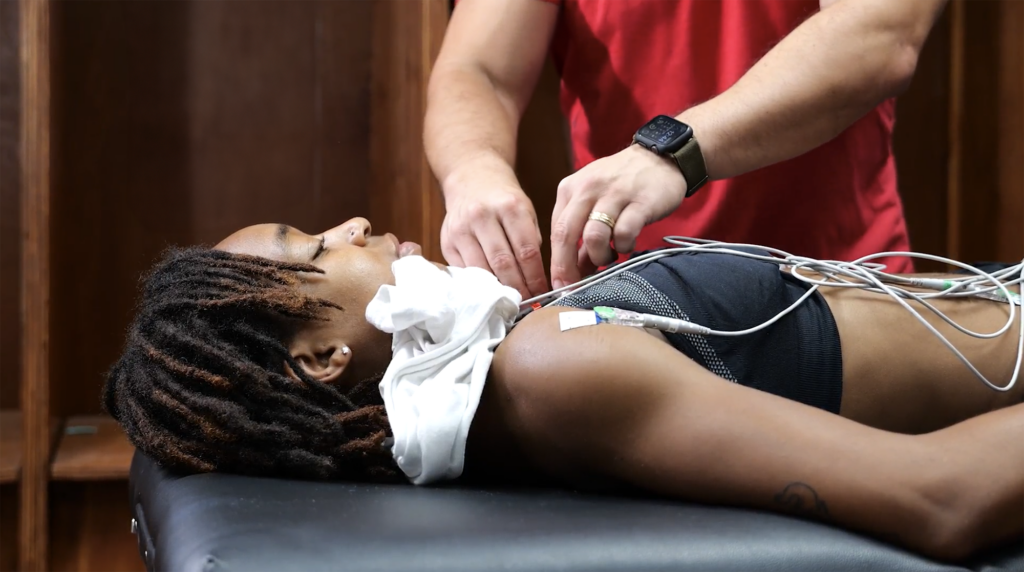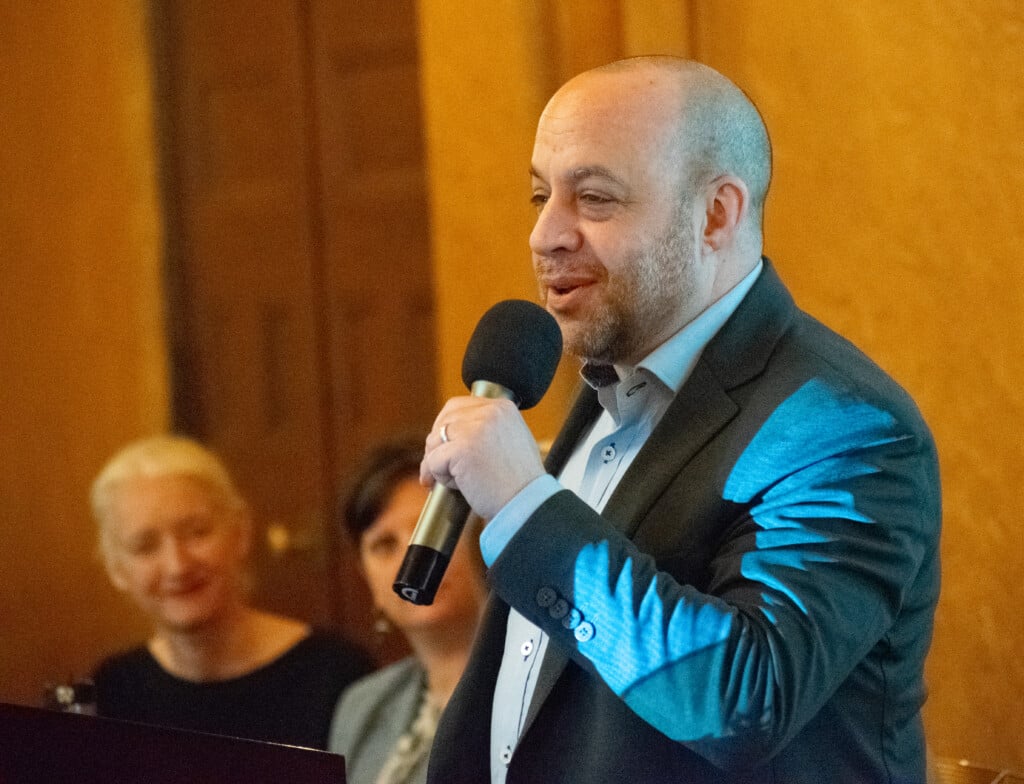GA GA LAND
Georgia’s film industry spurs big plans beyond production

Y’all listen up – Y’allywood is No. 1 at the box office. In 2016, Georgia overtook California as the top location for production of feature films – 17 of the top 100 grossing movies were filmed here. Feature film and television shoots led to an economic impact of $9.5 billion in fiscal 2017 and $2.7 billion in direct spending.
In Metro Atlanta, and a few other parts of the state, film studios and sound stages are sprouting up or planning expansions. And as a native workforce trained in film production reaches critical mass, the studios are having an impact on jobs but also on housing, new business, retail and hospitality.
The movie business isn’t as transient as people think, says Frank Patterson, president of Pinewood Atlanta Studios, which vaulted the city into Hollywood territory by serving as the home for many of the Marvel movies (most recently Black Panther and the upcoming Avengers: Infinity War) among other large productions. “When we started the very first year, 90 percent of the [license] plates were California – it was all rental cars and California plates. Now you walk out on the lot, and it seems like 80 to 90 percent is Georgia,” he says.
So Dan Cathy, CEO of Chickfil-A and co-owner of Pinewood Studios, envisioned a “town for creating” rising adjacent to the studio. The result, a 234-acre mixed-use development in Fayetteville, has been compared to Seaside or Serenbe, master-planned communities in the Florida panhandle and South Atlanta, respectively. Rob Parker, president of Pinewood Forest, says the idea was “if you could go back to Burbank or Hollywood and plan how that was built, what would you do?”
Pinewood Forest’s New Urbanism village, which has pedestrian-friendly, mixed-use zoning and an emphasis on public spaces, is directly across Veteran’s Parkway from Pinewood Studios, with 600 single-family homes, 100 townhomes and 600 apartments. Parker expects two hotels and about 250,000 square feet of retail and commercial development to round things out. The target market? Creatives – and not just movie people. That’s why the development’s tagline is “a town for creating,” says Parker. “Not just the movie industry, but attracting people who are storytellers and makers.”
Many of the creatives Pinewood Forest is targeting are millennials, although the neighborhood also appeals to empty nesters, Parker says. But the mid-20- to mid-30-year-old market does mean that the development is mixing up its housing options to help with affordability. In addition to multifamily housing, there will be “microhouses” of 500 square feet and some co-housing spaces with shared living areas and private bedrooms. Right now, prices range from $280,000 to over a million.
The Big Short
That “creative class” may be drawn by the studio, whose biggest role is probably enhancing the coolness quotient while it helps goose the local economy. Parker – who’s also vice chair of the Fayette County Chamber of Commerce board of directors – says that although the county’s infrastructure can handle the increased traffic, right now “every house that has a basement or an upstairs extra bedroom is being rented by somebody at the studio. … I don’t know what the occupancy numbers are but they’re really low, and our inventory for new housing is really low. There’s a pent-up demand for that. And certainly our restaurants and stores are feeling the impact of more people.”
Restaurants are another sector where Pinewood Forest wants to make an impact. Atlanta may be known as a great food city, but the offerings get sparser the farther south you go. Pinewood Forest wants to change that by recruiting new concepts from existing restaurants or enticing a “No. 2 chef” to launch an eatery where he or she is in charge. “No national or regional chains,” says Parker, who’s thinking big. “I think it could be one of the best food streets in Atlanta when it’s fully built.”
On the site of the former Fort McPherson Army base in Southwest Atlanta, where Tyler Perry Studios has relocated, Brian Hooker, executive director of Fort Mac LRA, the local redevelopment authority responsible for revitalization in the community and on the base, says the studio brings a vibrancy to the area as well as some solid leads.
“Folks want to lease space on our side of the property or be part of our development so they can service the film studio,” he says. So the mixed-use community proposed there will also target creative workers and residents, though like Parker, Hooker notes “it’s not just those producing films, but all sorts of creatives.” The LRA is expected to roll out a master plan this month.
Although the decision to sell the land for the studio to Tyler Perry was controversial, with some fearing the studio would be walled off from the community and not contribute to a much-needed economic revival in the low-income area, Hooker says that it’s led to a shift in attitude among developers. “That’s a big, important shift for us because the demographics of our surrounding community are not inviting to the commercial real estate industry,” he says. “Understanding that good-paying jobs are being created – even if they’re in a certain industry, there’s still a lot of economic activity that can be associated with those jobs – it changes minds of those at the top.”
The studios benefit, too. Patterson says that the investment of private capital in these developments is an important adjunct to the tax credits responsible for the boom in movie production here. “It shows the film industry that Georgia’s commitment to the industry is much deeper than smart tax policy,” he says.
Office Space
It’s a similar situation but a different setup at Assembly Yards in Doraville, the long-delayed redevelopment of the old GM assembly plant site. Hampered for years by funding and bureaucratic squabbles with DeKalb County, the redevelopment start-ed to move forward after a newly formed CID helped provide bond money for infrastructure in the summer of 2017.
Assembly, a $2-billion mixed-use project, was designed with a studio – Third Rail – as its anchor tenant, rather than beginning with a studio and later crafting a mixed-use development around it. Third Rail is much smaller than Pinewood – 60,000 square feet of stages (three purpose-built stages) to Pinewood’s 361,000 square feet (18 purpose-built stages).
“One or two shows can live here and kind of know it’s their home,” says Third Rail’s president of operations, Dan Rosenfelt. He describes it as providing boutique-like services and amenities. Rampage, a movie starring Dwayne Johnson and opening in April, was filmed there.
The studio is just a piece of the development, not the whole project, says Michael Hahn, president of Capstone South, which is working in partnership with Integral Group, Assembly’s developer. But the studio is the “cool” piece, and the market of live-work-play residents encompasses millennials and the creative class. Artists and creatives help influence some of the retailers that Assembly is targeting, says Hahn.
The development is also going after traditional businesses, recently landing the headquarters for mattress maker Serta Simmons, which will relocate 500 jobs to the site when it opens in 2019. Serta and Third Rail are neighbors in the Assembly Yards section of the development, which will include retail, a cinema and multifamily housing. Groundbreaking for the multifamily component, Eviva Yards, was scheduled for early 2018. “We don’t want Assembly to be about the film business, but we want the film business to be at Assembly,” says Hahn.
That makes sense, according Fort Mac’s Hooker. Most of the mixed-use developments adjacent to studios are relying on other major employers in their areas to drive development, he says. “As a state, we have the challenge of saying, ‘How do we quantify the impact of these film studios to better directly drive economic development?’” Hooker says. “It doesn’t quite translate into the same type of economic development story that you tell if you were bringing in 1,000 office jobs to the community. People understand the behavior of office work and what the economic impact will be. They don’t quite understand as much the behavior of film studio work.”
In the more traditional sense, Assembly is thought to be on the state’s very short list of potential sites for Amazon’s HQ2. (“It’s not something we’re really allowed to talk about,” says Hahn.) Another possibility could be Kodak, which announced it is planning a Photographic Arts Center in Atlanta, driven by a resurgence of projects like The Walking Dead and Hidden Figures shooting on film (versus digital).
Other businesses benefit from a spillover effect. Rosenfelt notes several nearby sign companies provide those yellow location signs for Third Rail and its clients, while antique stores in Chamblee sell to set decorators. Even local T-shirt companies can get in on the act, so to speak. “I hire them all the time to do Third Rail shirts or our clients’ shirts for cast and crew,” says Rosenfelt.
“We have 400 to 500 people here working on projects during filming,” says Hahn. “It does [extend] over to the restaurants, housing, dry cleaners, paint stores, lumber – everything like that, it’s all affected by the studio.”
It’s the same effect on the Southside, where Atlanta Metro Studios’ six stages (135,000 square feet total) now occupy the site of the old Shannon Mall in Union City. Ed Richardson, managing partner and one of the founders of the studio that opened in 2016, ticks off some of the same beneficiaries: existing hotels, dry cleaners, car rental agencies, retail. And he notes that developers started to stir when the old mall was demolished in 2014. “For the [year] prior to that demolition … the total number of applications for new business licenses in Union City was 18. As we roll into 2018, there are more than 500 … in the queue,” he says.
The studio isn’t responsible for all of that activity, but it’s provided a spark. “Atlanta Metro Studios was to serve as a catalyst for the growth of everything that surrounds the property,” Richardson says. “I was with Mayor [Vince] Williams this morning as he shared an update specific to the next 14 to 24 months [about] a flood of new business activity already in the pipeline that will include opening doors for new restaurants, hotels and retail.”
Even intown neighborhoods see an impact. Blackhall Studios, with nine sound stages ranging from 20,000 to 40,000 square feet, opened in 2017 in Southeast DeKalb County. The studio, which quickly hosted Godzilla: King of Monsters (opening in 2019), is already planning an expansion. Board chair Ryan Millsap says the entertainment industry “is having a big impact on life in the center of Atlanta” – from restaurants to hotels to Airbnb.
Although he says it takes time for a studio to become a “gravitational force,” he expects that Blackhall will eventually have a big influence on its immediate surroundings, an industrial area with warehouses and trucking centers. And in the meantime, Millsap is exploring building a hotel in Inman Park, in part to accommodate the influx of people working at the studio.
Last spring, the Georgia Building Authority approved an $8-million offer by Atomic Entertainment to turn Atlanta’s historic Pullman Yard complex into another mixed-use development anchored by a movie studio. The $100-million project will include a 20,000-foot sound stage, recording studios, live performance spaces, restaurants, retail, residences and office space for digital startups. In addition, historic structures are slated to be preserved, and a portion of the land will feature a nature sanctuary with walking and biking trails.
Future World
Although film studios are concentrated in Metro Atlanta, activity is beginning to spread through the state. In Columbus, animation studio Fun Academy Motion Pictures plans to release its first feature in April, prompting Columbus State University to consider adding animation to its Bachelor of Arts offering. In Savannah, the Savannah College of Art and Design (SCAD) owns and operates a studio with three sound stages and ready access to student talent and recently opened River Oaks Studio, which debuted with a 20,000-square-foot sound stage and plans for five more.
But the big economic impact of film in Georgia is still to come, say the studio heads. That will happen when the state becomes a center for creative development, not just production – when the ideas and the financing for a project don’t have to come from out of state. Imagine Georgia screenwriters selling scripts to well-financed (and connected) Atlanta producers, who can make the magic, and the money, happen.
“We have the chance to bring the front end of the industry here as well,” says Third Rail’s Rosenfelt. “To develop it and finance it ourselves.”
For that, the state needs capital and content. Patterson says both are important: “We need to foster the creative [people] we have here, but we also need to be attractive to those top creators [so they want to] live and create that content here,” he says. “And then parallel to that, we have to continue to mature our local capital investment culture.”
“We will reap huge benefits when the Hollywood creatives start living in Atlanta and meeting the tech guys,” says Millsap. That could lead to all kinds of “productions,” from video games to whatever we wind up watching on our myriad devices.
“It’s not just feature films and television,” Patterson says. Those “old labels” are useful right now, but take a 100-minute show on Netflix that’s broken into 10 segments – “Is it a feature film? Didn’t show in a theater. Is it television? Mobile? Digital?” Patterson asks. “It’s all of that, right? It’s storytelling that uses all of the same resources, all of the same labor and all of the same capital to entertain the world.”
With a “made in Georgia” credit.






